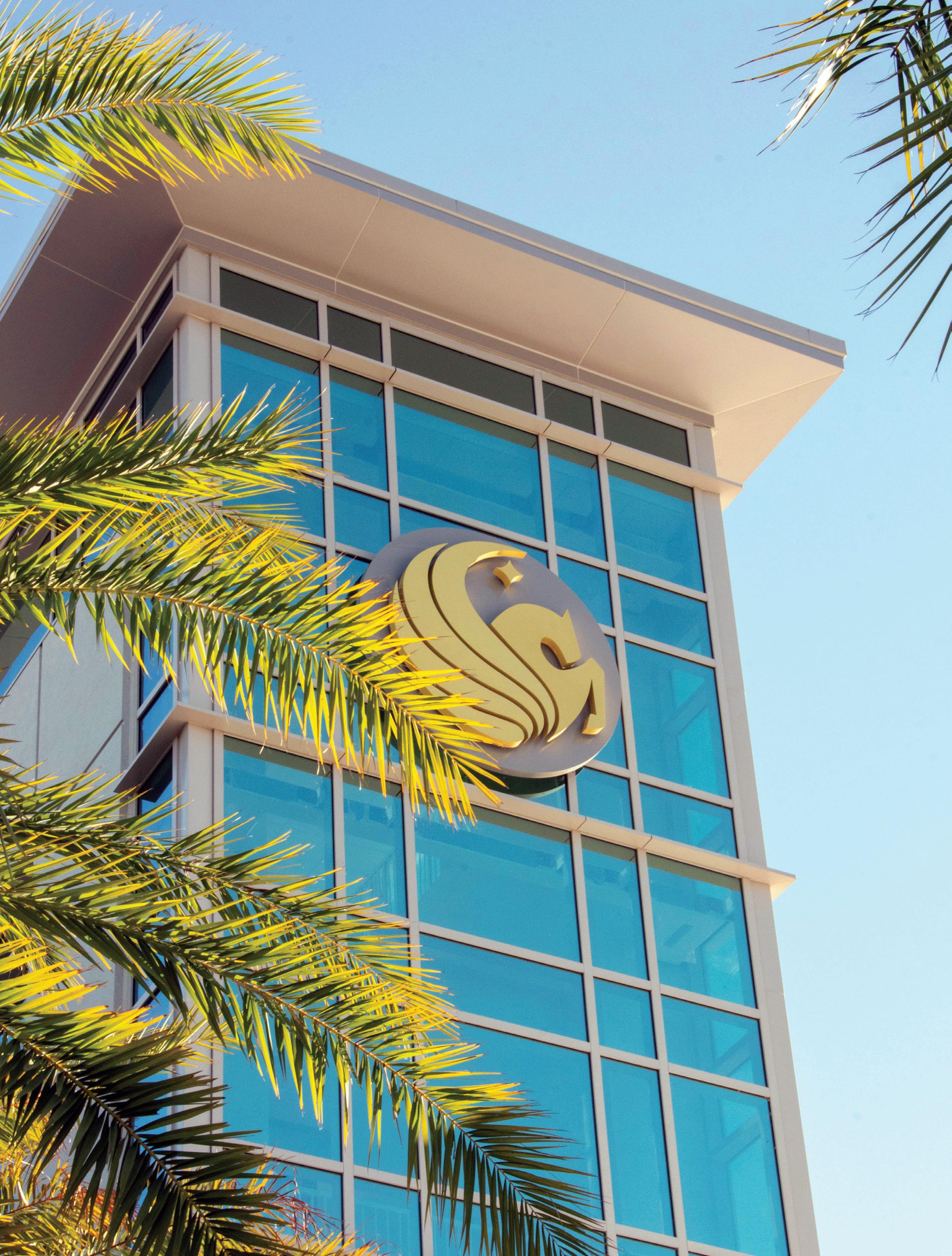

NOVEMBER/DECEMBER 2022 • COVERING THE I-4 CORRIDOR UCF Lake Nona Medical Center Expanding Access to Care in Orlando’s Medical City

ORLANDO REGIONAL MEDICAL CENTER. When you choose Orlando Health, you choose board-certified expertise no matter which of our state-of-the-art facilities delivers your care. At Orlando Health - Orlando Regional Medical Center, the region’s only Level One Trauma Center, we deliver care and treatment in cardiology, orthopedics, neurology, oncology, digestive issues and more. For close to home expertise from Central Florida's most trusted team, choose Orlando Health. CLOSE TO HOME EXPERTISE AT ChooseOrlandoHealth.com/ORMC CARE AT ORMC: • Orlando Health Digestive Health Institute • Orlando Health Heart & Vascular Institute • Orlando Health Jewett Orthopedic Institute • Orlando Health Neuroscience and Rehabilitation Institute • Emergency Care • General/Robotic Surgery • Warden Burn Center My Chart N ow Avail able 100 Top Hospitals® is a registered trademark of IBM Watson Health™.
COVER STORY
After breaking ground in 2018, UCF Lake Nona Medical Center opened to the public this month, providing full-service healthcare to Lake Nona and surrounding communities in southeast Orlando and Osceola County. Located at 6700 Lake Nona Blvd., adjacent to the UCF College of Medicine in Orlando’s Medical City, Lake Nona’s new hospital provides 24/7 emergency care and an array of inpatient and outpatient hospital services and is expected to serve more than 17,000 patients in its first year.

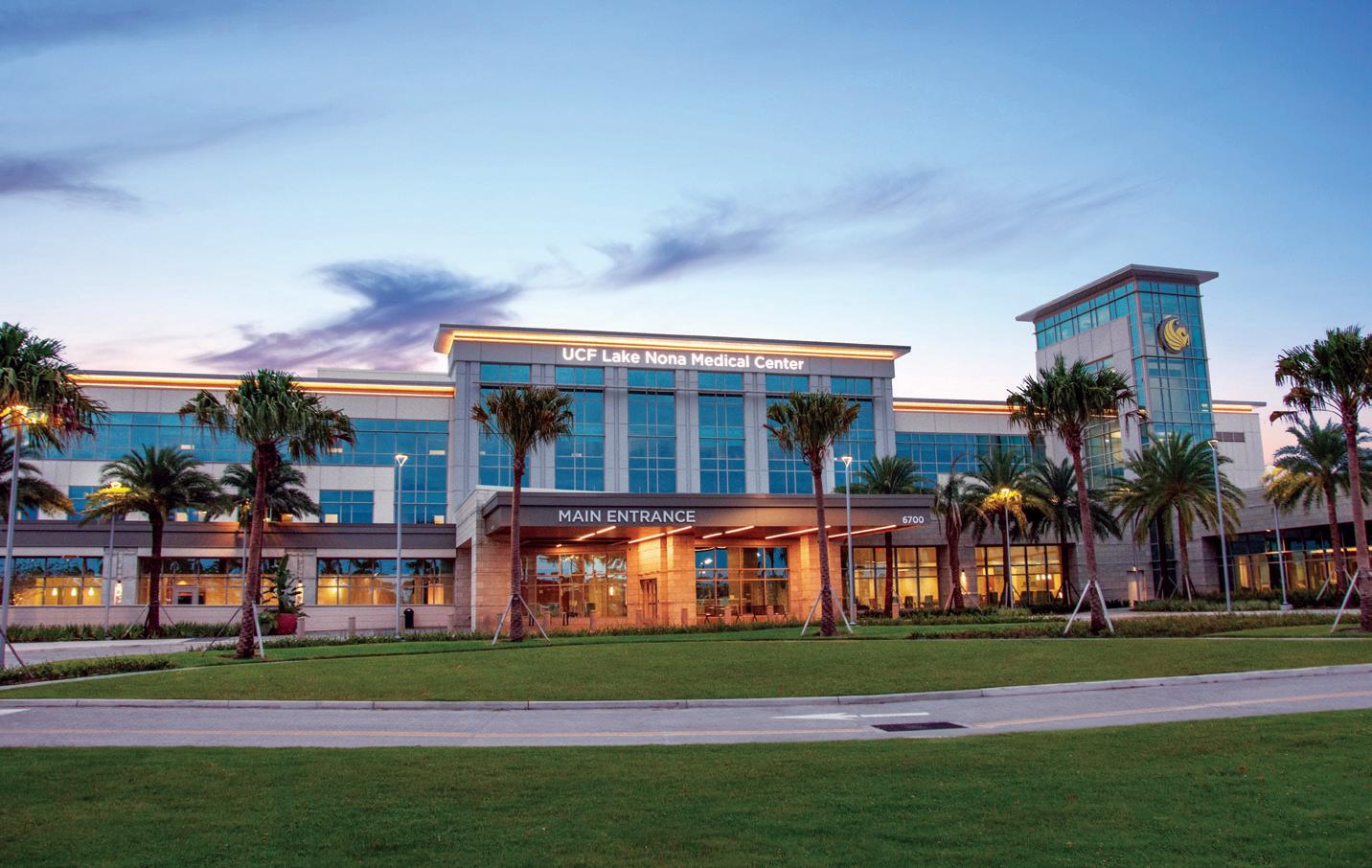
The establishment of the new hospital was a $175 million investment toward creating an immediate access point to acute inpatient care for adults. Previously, that level of care was only available in the Lake Nona area for children (at Nemours Children’s Hospital) and veterans (at Orlando VA Medical Center at Lake Nona). Now, adults of all ages have immediate, convenient access to a full-service hospital featuring 64 inpatient beds, a 20bed emergency department, four operating rooms, a cardiac catheterization lab, comprehensive imaging and laboratory services, and six private birthing suites.

FLORIDA MD - NOVEMBER/DECEMBER 2022 1 DEPARTMENTS 2 FROM THE PUBLISHER 8 PULMONARY 10 DERMATOLOGY 12 PEDIATRICS NOVEMBER/ DECEMBER 2022 COVERING THE I-4 CORRIDOR contents 11 HEALING ECZEMA: BEYOND SKIN DEEP 13 MULTIMODAL PAIN MANAGEMENT WITH OPIOID MINIMIZATION 4
PHOTO: PROVIDED BY UCF LAKE NONA MEDICAL CENTER
PHOTO: PROVIDED BY UCF
LAKE NONA MEDICAL CENTER
ON THE COVER: UCF Lake Nona Medical Center
Iam pleased to bring you another issue of Florida MD. .This time of year is special to all of us regardless of religious persuasion. It is especially important to children. However, it can be a particularly distressing time for children that are neglected, abandoned or live in abusive homes.
The Children’s Home Society of Florida tries to make a better life for these children by finding them a loving home either temporarily through foster care or permanently through adoption. But there are a lot of children – nearly 20,000 – in Florida who can’t live safely with their families right now. They need more than Children’s Home Society of Florida … they need all of us. I hope some of you can find the time to assist this very worthwhile organization in its efforts to help these special children. To find out more information please visit www.chsfl.org.
Have a wonderful holiday season and a happy, healthy and prosperous New Year.
Best regards,
Donald B. Rauhofer


Publisher
ADVERTISE IN FLORIDA MD
For more information on advertising in Florida MD, call Publisher Donald Rauhofer at (407) 417-7400, fax (407) 977-7773 or info@floridamd www.floridamd.com
Email press releases and all other related information to: info@floridamd.com

PREMIUM REPRINTS
Reprints of cover articles or feature stories in Florida MD are ideal for promoting your company, practice, services and medical products. Increase your brand exposure with high quality, 4-color reprints to use as brochure inserts, promotional flyers, direct mail pieces, and trade show handouts. Call Florida MD for printing estimates.
Publisher: Donald Rauhofer
Photographer: Donald Rauhofer / Florida MD
Contributing Writers: John “Lucky” Meisenheimer, MD, Daniel T. Layish, MD, Joseph Cannizzaro, MD, Luke Elms, MD, Brian C. Kellogg, MD, Sonda Eunus, MHA, Michael Patterson NHA, OTR/L, CEAS, John Meisenheimer, VII
Art Director/Designer: Ana Espinosa
Florida MD is published by Sea Notes Media,LLC, P.O. Box 621856, Oviedo, FL 32762. Call (407) 417-7400 for more information.
Advertising rates upon request. Postmaster: Please send notices on Form 3579 to P.O. Box 621856, Oviedo, FL 32762.
Although every precaution is taken to ensure accuracy of published materials, Florida MD cannot be held responsible for opinions expressed or facts expressed by its authors. Copyright 2022, Sea Notes Media. All rights reserved. Reproduction in whole or in part without written permission is prohibited. Annual subscription rate $45.
FLORIDA MD - NOVEMBER/DECEMBER 2022 FROM THE PUBLISHER 2
Ten years on and we’re turning the tide for children. Since opening one decade ago, Nemours Children’s Hospital, Florida has been part of a sea change in children’s health. Bringing unique programs to millions of central Florida families, providing innovative care to our region’s most medically challenged children, and ensuring a pipeline of pediatric providers across the state. While we celebrate how far we’ve come, it’s not even close to how far we’ll go to ensure every child’s world is a place for them to thrive.

Well
Beyond Medicine Go well beyond at Nemours.org/Beyond
An Official Sponsor of the USTA National
Campus
The ripple effects of better health.
UCF Lake Nona Medical Center –Expanding Access to Care in Orlando’s Medical City
 By Staff Writer
By Staff Writer
After breaking ground in 2018, UCF Lake Nona Medical Center opened to the public this month, providing full-service healthcare to Lake Nona and surrounding communities in southeast Orlando and Osceola County. Located at 6700 Lake Nona Blvd., adjacent to the UCF College of Medicine in Orlando’s Medical City, Lake Nona’s new hospital provides 24/7 emergency care and an array of inpatient and outpatient hospital services and is expected to serve more than 17,000 patients in its first year.

The establishment of the new hospital was a $175 million investment toward creating an immediate access point to acute inpatient care for adults. Previously, that level of care was only available in the Lake Nona area for children (at Nemours Children’s Hospital) and veterans (at Orlando VA Medical Center at Lake Nona). Now, adults of all ages have immediate, convenient access to a fullservice hospital featuring 64 inpatient beds, a 20-bed emergency department, four operating rooms, a cardiac catheterization lab, comprehensive imaging and laboratory services, and six private birthing suites.
“The grand opening of UCF Lake Nona Medical Center is the
realization of a vision that will impact the community for years to come,” said Wendy H. Brandon, FACHE, Chief Executive Officer. “With the rapid growth in Lake Nona, this community needed a hospital close to home. Our team looks forward to working with our medical staff to deliver innovative, patientcentered care to every patient and support Lake Nona’s commitment to health and well-being.”
Established in one of the state’s fastgrowing regions, UCF Lake Nona Medical Center was strategically designed and planned for with the future in mind –meaning the hospital intends to grow with the community. Currently, the facility has 64 inpatient beds. The facility’s shell space has immediate capacity to grow to 80 beds, and the hospital and campus are designed to grow to 500 beds, as
FLORIDA MD - NOVEMBER/DECEMBER 2022 4 COVER STORY
UCF Lake Nona Medical Center
PHOTO: PROVIDED BY UCF LAKE NONA MEDICAL CENTER:
PHOTO: PROVIDED BY UCF LAKE NONA MEDICAL CENTER:
UCF Lake Nona Medical Center’s Family Birthing Unit features six private birthing suites, offering all the medical technology mom and baby may need for a safe delivery – including a dedicated operating room for C-sections. Each suite is comfortably furnished with space for a guest to stay overnight. The hospital supports each mom’s birth plan and preferences, and provides a nurturing environment to support the family in bonding with baby following delivery, including rooming in, skin-to-skin care immediately following birth and personalized breastfeeding instruction.
needed. Looking ahead, Brandon expects the hospital’s first targets for expansion to be inpatient beds, as well as the ER, Family Birthing Unit and operating rooms. Since the hospital was designed to accommodate expansion in these areas, such additions would be completed without disruption to current services or care.
In addition to expanded access to care, the new hospital will also provide innovative treatments not previously available in the area, like incisionless brain surgery to treat patients with essential tremors. The hospital also features the latest technology to support superior quality care and patient safety, including systems to provide enhanced security, communication and experience. Examples include an interactive nurse call system that alerts care teams of patient needs in real-time, a real time location system which pinpoints equipment, staff and patient location throughout the hospital, smart hospital beds that collect patient data and communicate with patients in up to six different languages, and electronic information displays in each room, which communicate important information such as a patient’s care team, diet, activity schedule and the names and times of team members entering the room.
The community will also benefit from the hospital’s tremendous financial impact on the area’s economy. The new facility employs more than 370 staff members. In addition, more than 330 physicians have joined the UCF Lake Nona Medical Center medical staff, including specialists in primary care, cardiology, colorectal surgery, general surgery, gastroenterology, orthopedic surgery, pulmonology, nephrology, OB/ GYN, gynecologic oncology, infectious disease, nephrology, neurology, neurosurgery, spine and urology. UCF Lake Nona Medical Center is projected to contribute $1.4 million in local and state taxes and provide an estimated $13.8 million for charity and uncompensated care in its first year.
Thanks to a unique partnership between HCA Healthcare and the University of Central Florida Academic Health, UCF Lake Nona Medical Center will support community needs and boost the local economy – while simultaneously investing in tomorrow’s healthcare prac-


FLORIDA MD - NOVEMBER/DECEMBER 2022 5 COVER STORY
UCF Lake Nona Medical Center was thoughtfully designed to create a space that is warm and inviting, putting patients at ease with purposeful color choices, calming patterns, comfortable furniture and functional spaces. The lobby atrium features a gift shop, a quiet room and café complete with outdoor dining. Complimentary Wi-Fi service is available throughout the facility so guests can be notified by text when their loved one or a team member is ready for them. Located next door to the University of Central Florida’s College of Medicine, some design and architectural elements are repeated as a symbolism of the unique partnership between UCF College of Medicine and HCA Healthcare.
PHOTO: PROVIDED BY UCF LAKE NONA MEDICAL CENTER
UCF Lake Nona Medical Center features a full range of imaging technology for both inpatients and outpatients, including 64-slice Computed Tomography (CT), MRI, nuclear medicine, ultrasound, X-ray, 3-D mammography, DEXA scan and interventional radiology.
PHOTO: PROVIDED BY UCF LAKE NONA MEDICAL CENTER
The hospital invested in the latest technology to support superior quality care and patient safety for its new facility. Every patient room features a smart bed that weighs the patient and collects other important data, notifies care teams of patient movement to help avoid falls, and communicates with patients in up to six different languages. Each room is also equipped with an electronic white board, which communicates a patient’s diet, activity schedule and the names of team members entering the room in real time. Through the integration of cutting-edge technologies like these, the hospital can ensure higher levels of patient care, safety and satisfaction.

titioners. These future healthcare professionals will benefit from the depth and breadth of the HCA Healthcare network, tapping into its extensive clinical knowledge and innovative operating strategies.
“In addition to providing convenient access to outstanding healthcare services in Lake Nona, this hospital will also provide important educational opportunities for tomorrow’s physicians and support the work of our UCF researchers and scientists from across the country seeking innovative treatments and cures,” said Dr. Deborah C. German, Vice President for Health Affairs and Dean of the College of Medicine at University of Central Florida. “UCF Lake Nona Medical Center is the next step in creating a healthcare hub that will increase economic development and improve health for all.”
Designed with education spaces and technology throughout, the new hospital creates an ideal learning environment for future physicians, as well as UCF nursing, social work, pharmacy and physical therapy students and more. These students will be learning not only from the UCF Lake Nona Medical Center physicians but will also be supported by hospital colleagues committed to elevating the standards of care in the Lake Nona community. UCF Lake Nona Medical Center has also partnered with community physicians, as well as UCF College of Medicine physicians and researchers, who share a commitment to developing excellent caregivers and finding cures.
As the hospital’s leadership team celebrated their grand opening milestone this month, they also acknowledged the unique challenges of opening a hospital during the ongoing pandemic – something they’re well-equipped to handle.

“As we’ve seen even more so over this past year, access to quality healthcare and leading medical experts is paramount to the
health and well-being of our communities,” said Brandon. “We want our community to know they can trust UCF Lake Nona Medical Center to provide safe care, whether it is in a medical emergency, a planned medical or surgical procedure or welcoming a new baby to their family.”
UCF Lake Nona Medical Center opened its doors to the community Monday, March 1, hosting a virtual grand opening celebration that morning featuring HCA Healthcare and UCF leadership, hospital team members and community leaders. A recording of the program is available at UCF Lake Nona Medical Center’s Facebook page. To learn more, please visit www.ucflakenonamedicalcenter.com.

FLORIDA MD - NOVEMBER/DECEMBER 2022 6
COVER STORY
UCF LAKE NONA MEDICAL CENTER SERVICES:
6700 LAKE NONA BOULEVARD ORLANDO, FL 32827 • 689-216-8000 UCFLAKENONAMEDICALCENTER.COM UCF Lake Nona Medical Center’s rehabilitation technology includes a car transfer simulator, which allows patients to practice getting in and out of a vehicle during therapy sessions.
PHOTO: PROVIDED BY UCF LAKE NONA MEDICAL
CENTER
NEPHROLOGY NEUROHEALTH SCIENCES ORTHOPEDICS PULMONOLOGY ROBOTIC SURGERY SPINE CARE UROLOGY WOMEN’S CARE CARDIOLOGY COLORECTAL SURGERY 24/7 EMERGENCY CARE GASTROENTEROLOGY GENERAL SURGERY GYNOCOLOGIC ONCOLOGY IMAGING INFECTIOUS DISEASE MATERNITY
PHOTO: PROVIDED BY UCF LAKE NONA MEDICAL CENTER

FLORIDA MD - NOVEMBER/DECEMBER 2022 7 or call (844) 212-5321 to learn more. Visit neulinehealth.com/providers THE BEST EEG CLINICAL CARE FROM THE COMFORT OF HOME NeuLine Health is a neurodiagnostic services provider that performs convenient, at-home Ambulatory EEG testing for patients with neurological-related medical conditions. We are dedicated to serving qualified healthcare providers and their patients with best-in-class neurodiagnostic testing, nationwide. In-home testing puts the mind at ease, leading to a more accurate picture of neurological activity. Testing through NeuLine Health typically costs 3X less than inpatient care. Scheduling with NeuLine Health is fast and convenient, leading to faster answers on the next steps in your treatment. 01 02 03 Convenience & Comfort Affordability Rapid Results Leading the Wave IN EXCEPTIONAL EEG CARE
Pulmonary Rehabilitation
By Daniel T. Layish, MD, FACP, FCCP, FAASM
Pulmonary rehabilitation can benefit patients with a wide variety of lung diseases including COPD, pulmonary fibrosis, cystic fibrosis, and sarcoidosis (among other chronic respiratory illnesses). Pulmonary rehabilitation does not replace standard medical and/or surgical treatments for these lung diseases. Rather, it supplements and complements standard therapy.
Patients with COPD (and other chronic lung diseases) develop shortness of breath with activity. This leads to the tendency to avoid activity, which in turn leads to deconditioning. It is felt that one of the main benefits of pulmonary rehabilitation is to break the cycle of deconditioning. Pulmonary rehabilitation programs typically include two or three outpatient sessions per week for 10 to 12 weeks. Typically, a pulmonary rehab program will include aerobic exercise, strength training, patient education in management of lung disease - including nutrition, energy conservation, medication compliance, bronchial hygiene, and breathing strategies. The component of group support is also felt to be a significant contributor to the success of these programs. The group support motivates the patient to attend the pulmonary rehab sessions. It also allows the patient to realize that there are other people suffering from chronic respiratory illness and to see how they are able to overcome these obstacles. Pulmonary rehabilitation is considered to be critical both before and after lung transplantation. Occasionally, a patient will have such a significant functional and symptomatic improvement after pulmonary rehab that transplant can be delayed.
Pulmonary rehabilitation programs are typically multidisciplinary in nature and may include a respiratory therapist, registered nurse, exercise physiologist, nutritionist, physical and/ or occupational therapists. The staff is trained to encourage the patient’s self management and coach them to adopt healthier habits through lifestyle modification. To enroll in a pulmonary rehabilitation program requires a medical referral. Pulmonary rehabilitation is covered by most third party payors. Pulmonary rehabilitation is appropriate for any stable patient with a chronic lung disease who is disabled by respiratory symptoms.
The pulmonary rehab program should involve assessment of the patient’s individual needs and creation of a treatment plan that incorporates realistic goals tailored to each patient. Evidence based analysis consistently reveals improvement in health related quality of life after pulmonary rehabilitation as well as improved exercise tolerance. Pulmonary rehabilitation has been shown to improve the symptom of dyspnea and increase the ability to perform activities of daily living. Pulmonary rehabilitation has also been shown to reduce health care utilization (including frequency of hospitalization) and decreases length of stay (when hospitalization is required). Pulmonary rehabilitation has not been demonstrated to improve survival.
The benefit from a pulmonary rehabilitation program may decline over time if the individual does not maintain their con-
ditioning. Some pulmonary rehabilitation programs will therefore include a “graduate” or maintenance program after the patient finishes the initial program.

Patients who develop shortness of breath often become anxious which in turn exacerbates the sensation of dyspnea and this can become a vicious cycle. Pulmonary rehabilitation can be very helpful in addressing this problem. Sometimes pulmonary rehabilitation will require supplemental oxygen with exercise. Although the strongest evidence regarding pulmonary rehabilitation programs is in the setting of COPD, it has been shown to be beneficial in a variety of disease states. Pulmonary rehabilitation has been shown to be a cost effective tool in the fight against chronic lung disease. It is currently felt to be underutilized.
Daniel Layish, MD, graduated magna cum laude from Boston University Medical School in 1990. He then completed an Internal Medicine Residency at Barnes Hospital (Washington University) in St.Louis, Missouri and a Pulmonary/Critical Care/Sleep Medicine Fellowship at Duke University in Durham, North Carolina. Since 1997, he has been a member of the Central Florida Pulmonary Group in Orlando. He serves as Co-director of the Adult Cystic Fibrosis Program in Orlando. He may be contacted at 407841-1100 or by visiting www.cfpulmonary.com.
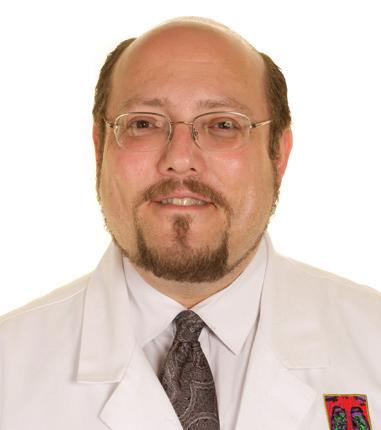
FLORIDA MD - NOVEMBER/DECEMBER 2022 8
PULMONARY AND SLEEP DISORDERS

FLORIDA MD - NOVEMBER/DECEMBER 2022 9 Hospice • Palliative Care • Grief Support
Featuring specialized programs and services for children to seniors, and a proud Level 5 We Honor Veterans program provider. (866) 269-4240 I reflectionslsc.org
It’s not about counting the days. It’s about making the days count.
The $8500 Tube of Cream
By John “Lucky” Meisenheimer, MD and John Meisenheimer, VII
Several years ago, a patient came back to my office for a return visit. She had been seen earlier that week for a small amount of intertrigo underneath her breasts. Intertrigo is a common inflammatory condition of the skin folds, and it is aggravated by heat, moisture, and friction. Occasionally a patient might get a minor secondary yeast infection in the area as well. The treatment is keeping the area dry and using a topical cream to clear the yeast and decrease the inflammation.

The patient said, “doctor, I am worse.” I asked how she was using the cream, and she responded that she had not filled her prescription. Now I have lived through this scenario before with other patients. I am always amazed when people seem surprised that their condition has not improved when they have either not filled their prescription or filled the prescription and never used the medicine.
Now, if they filled the prescription and didn’t use the medicine, I am flummoxed as I am not sure how to respond. So, I usually say “oh” and stop talking, leaving a long moment of uncomfortable silence that eventually forces the patient to speak. Then the response comes, “so you think I should use the medicine you prescribed?” I reply, “Well, yes, as we have tried not using the medicine, and that plan is not working so good.” Amazingly, the patient seems okay with this response and goes happily on his or her way. Yes, this very conversation has happened on more than one occasion.
Now, in this case, since this patient had not filled her prescription, I wanted to know why. In the past, the cream I prescribed called Alcortin sold for about $35 a tube, so I didn’t think the cost was a concern. She then told me that the pharmacist wanted to charge her $8500.00 for a tube of the cream. I laughed out loud because I knew there had been some gross misunderstanding regarding the cost, and I said there must have been a decimal put in the wrong place. I was confident she didn’t understand the pharmacist correctly.
The patient was very adamant that she had spoken with the pharmacist in person, and there was no question that the price was $8500.00. I asked her for her pharmacy, and I contacted the pharmacist myself. I started by saying, “well, I am just clearing up a misunderstanding. There is a patient here that is trying to tell me that Alcortin is $8500.00 a tube. I am sure the decimal point has been put in the wrong place, or you mistakenly thought I ordered a tractor-trailer full of the cream. There was a long pause, and the pharmacist said, “no, $8500 is correct,” and it wasn’t for a flatbed truck loaded with cream; it was for one lousy 60-gram tube. At the time, that cream was selling for four times its weight in gold! The pharmacist had no explanation for why the medicine went up so much in price; all he knew was that was the price.
Since that bit of medical-cultural shock, other medicine prices have skyrocketed as well as everyone reading this knows. Nobody seems to know why, but I suspect this is due to our government meddling with the free market system. When the last big round of Medicare laws changed the way Medicare buys drugs, and this had bipartisan support I might add, this is when the chaos started. Drug companies loved the clause that they could name their price without any negotiation on price, and we are all now living the outcome.
Just recently, a study showed that worldwide, when several first world countries were compared for the average cost spent on nineteen different conventional medicines, the United States was paying 300% more than the average price paid by other countries. Iceland, for example, was paying approximately 50% the average cost, which means that we are spending six times as much as the Icelanders for the same medication. So why don’t we go to Iceland and buy all our medicines straight from Iceland? The answer is the drug companies have convinced the government that reimportation should be illegal. Therefore, it is unlawful to reimport medicines (a bill has been passed in Florida to allow reimportation, but it still faces an uphill battle for implementation). In other words, the United States is subsidizing the healthcare of the rest of the world by paying outrageous prices, allowing other countries to continue paying bargain-basement prices. Yet, we wonder why our healthcare costs so much here in America.
So how did I resolve the problem of the $8500 cream? Well, we sent the prescription to the local compounding pharmacy and had virtually the same medicine compounded up for $75. The patient did well and saved $8425 along the way. And what happened to the company that made Alcortin and raised the price thousands of dollars? Well, they went bankrupt. What goes around comes around.
Lucky Meisenheimer, M.D. is a board-certified dermatologist specializing in Mohs Surgery. He is the director of the Meisenheimer Clinic – Dermatology and Mohs Surgery. John Meisenheimer, VII is a medical student at USF.

FLORIDA MD - NOVEMBER/DECEMBER 2022 10 DERMATOLOGY
: Intertrigo - Would you spend $8500.00 on a tube of cream to treat this eruption?
PHOTO: JOHN MEISENHEIMER, VII
Healing Eczema: Beyond Skin Deep
By Joseph Cannizzaro, MD

Oftentimes the children we treat in our practice suffer from asthma, allergies, eczema and other comorbid conditions, which create a persistent inflammatory state in the body. In these cases, we apply a synergistic mix of healing factors: nutrition with dietary modifications, supplements, enhanced detoxification, and medications when necessary. We determine food intolerances, look for nutritional deficiencies, and analyze chemical exposures. Additionally, salt therapy has proven to be a safe and effective healing modality that helps clear eczema completely.
HOW DOES SALT THERAPY HELP HEAL ECZEMA?
In January 2018, our pediatric center became the newest location for The Salt Room® in Central Florida. Salt therapy is performed in this special spa-like room with salt-coated walls and floor, called a halochamber. Pharmaceutical-grade salt is pulverized into microscopic particles and pushed into the room by a halogenerator.
Salt therapy involves lounging in this cozy room and passively breathing in the particles while listening to soothing music, reading, or just relaxing in a zero-gravity chair. Toys are provided so children can play with the salt in the room, much like sand at the beach.
The salt particles enter the lungs and nasal passages, accelerating mucus clearance and improving lung function while killing harmful bacteria and soothing the respiratory system. The antibacterial, anti-fungal, and anti-inflammatory properties of salt have been documented to help with symptoms of both respiratory and skin conditions.
HOW SALT THERAPY PROVIDES RELIEF FOR ECZEMA:
• Fortifies the skin’s protective barrier
• Stimulates microcirculation
• Reduces inflammation, redness and irritation
• Has anti-bacterial and anti-fungal effects
• Reduces IgE levels
• Helps normalize the skin’s pH balance
• Promotes healthy tissue regeneration
• Facilitates deeper penetration of skin care products
• Increases skin elasticity
• Cleans impacted follicles
• Promotes gentle exfoliation (cell turnover)
For those suffering from eczema, salt therapy works by activating multiple physiological processes in the body. On the outside of the body, the salt particles kill bacteria and fungi, reduce inflammation on the skin, and improve circulation on the skin surface. Salt calms the itchy rash and heals cracks, which restores
the skin’s barrier against infections and allergens. The skin and respiratory tract are cleansed of allergens like pollen, dust, or smoke. Salt therapy also reduces stress and strengthens the body’s defense system. Salt therapy is a clinically-proven, natural, safe, and beneficial method of treatment for every age group.
Taking a holistic approach to eczema—identifying the underlying cause(s), applying the appropriate integrative protocol, and incorporating salt therapy—has yielded successful outcomes for our patients. This “beyond the surface” approach to a skin condition has proven to shorten the journey to lasting relief—with a side effect of smiles.
Joseph Cannizzaro, MD has been practicing pediatrics in Central Florida for over 40 years and is the author of “Answers for the 4-A Epidemic: Healing for Kids with Autism, ADHD, Asthma and Allergies.” As a classicallytrained primary care physician who practices functional integrative medicine, Dr. Cannizzaro believes that integrative medicine can bring conventional and complementary healing modalities together, creating a highly personalized and high-touch healing environment. Call the Cannizzaro Integrative Pediatric Center at 321-2805867 for a meet and greet or to book a session at The Salt Room® Longwood. www.MyCIPC.com.

FLORIDA MD - NOVEMBER/DECEMBER 2022 11
22q11.2 Deletion Syndrome
By Brian C. Kellogg, MD, Chief of Plastic and Craniofacial Surgery, Nemours Children’s Health
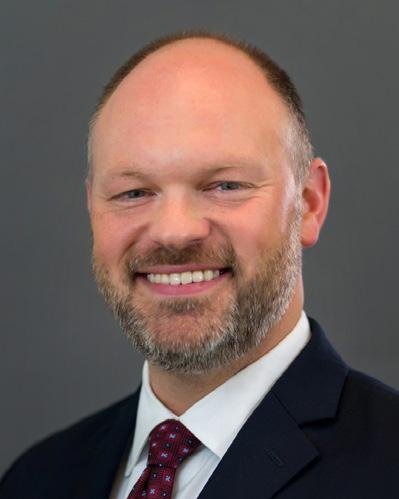
Q: WHAT IS 22Q11.2 DELETION SYNDROME?
A: 22q11.2 deletion syndrome (22qDS) is a common microdeletion disorder of variable expressivity that results in multi-organ system dysfunction. Patients may present with heterogenous combinations of cardiac anomalies, genitourinary anomalies, endocrinopathies, immunodeficiencies, overt or submucous cleft palate, velopharyngeal dysfunction (hypernasal speech), hematologic problems, gastrointestinal problems, developmental delays, neuropsychiatric illness and characteristic facial features. Several previously described disorders, including DiGeorge syndrome, velocardiofacial syndrome, conotruncal anomaly face syndrome, Opitz G/BBB syndrome and Cayler cardiofacial syndrome, are now recognized as different manifestations of 22qDS. The incidence of 22qDS is estimated to be around 1 in 4,000. It is the second most common cause (behind Down syndrome) of congenital heart disease and developmental delays, and it is the most common genetic cause of structural anomalies of the palate.
Q: WHAT CAUSES 22QDS?
A: 22qDS is caused by a microdeletion on the long (q) arm of the 22nd chromosome. It has an autosomal dominant inheritance pattern with variable expressivity, but 90-95% of cases are believed to result from de novo mutations. 22qDS has not been linked to any extrinsic or environmental factors during fetal development.
Q: WHAT ARE THE SIGNS AND SYMPTOMS OF 22QDS?
A: Congenital heart anomalies are often the earliest sign that a patient may have 22qDS. Further investigation into other organsystems and genetic testing can confirm the diagnosis. Other patients may escape diagnosis in the neonatal period only to present to a specialist later in life with very specific complaints, such as hypernasal speech. Specific signs and symptoms affecting different organ-systems that may be present include:
General: 22q facies (short forehead, hooded eyelids, upslanting palpebral fissures, prominent ears, malar flatness, bulbous nasal tip, small nasal alae, generalized hypotonia, multiple congenital anomalies, polyhydramnios, learning disabilities
Cardiac: Any congenital heart anomaly, especially conotruncal (tetralogy of Fallot, truncus arteriosus, interrupted aortic arch, transposition of the great vessels, etc.)
Endocrine: Hypoparathyroidism, hypocalcemia, growth hormone deficiency, hypothyroidism
Palate: Submucous cleft palate, overt cleft palate, high-pitched cry, nasal regurgitation, recurrent otitis media, hearing loss, hypernasal speech (velopharyngeal dysfunction)
Hematologic: Intrinsic platelet dysfunction, thrombocytopenia, easy bleeding, splenomegaly
Immunologic: Humoral and cell-mediated immunodeficiencies, may manifest as recurrent infections
GI: GERD, dysmotility/dysphagia, cholelithiasis, imperforate anus, malrotation, Hirschprung’s disease
Genitourinary: Any structural GU anomaly, unilateral renal agenesis, multicystic dysplastic kidneys
Skeletal: Scoliosis, C-spine anomalies
Development: Failure to thrive, short stature, expressive and receptive language delays, gross motor delays, learning disabilities
Neuropsych: Attention deficit or autism spectrum in young children, anxiety or depression, schizophrenia or other psychotic disorders in teens/adults
Q:
HOW IS 22QDS DIAGNOSED?
A: Genetic testing is required to confirm the diagnosis. Fluorescent in situ hybridization (FISH) or chromosomal microarray are two commonly employed modalities.
Q: HOW IS 22QDS TREATED?
A: Patients require a multitude of tests at the time of diagnosis. Per care guidelines, many of these assessments must be repeated at regular intervals. For example, children with 22qDS only require an immunologic evaluation at the time of diagnosis and once again in preschool years (unless specific concerns arise). However, guidelines recommend thyroid studies annually.
Due to the multi-system nature of 22qDS, these patients are most effectively managed in the setting of an interdisciplinary team experienced in treating patients with 22qDS and wellversed in the care guidelines. Care coordination is crucial when working with children with 22qDS because of the large number of specialists who are involved and the complexity of the child’s care. Studies have shown that interdisciplinary team care leads to significantly improved adherence to care guidelines.
Q: WHAT ARE THE OUTCOMES FOR CHILDREN WITH 22QDS?
A: Outcomes for children with 22qDS are highly variable based on the systems involved and the degree to which they are affected. 22qDS can affect any system of the body, which is why early detection and treatment is so important. While there is no cure for 22qDS, therapies and medical interventions can help address its associated symptoms.
There is still very little information available for this population. Most 22qDS clinics are housed in pediatric institutions, so a
FLORIDA MD - NOVEMBER/DECEMBER 2022 12
PEDIATRICS CONTINUED ON PAGE 14
Multimodal Pain Management with Opioid Minimization
By Luke Elms, MD
In 2016, overdoses accounted for more than 42,000 deaths in the United States according to data from Health and Human Services (HHS). While many of these deaths are multifactorial, a majority reportedly involved opioids. Despite HHS declaring a nationwide public health emergency regarding the opioid crisis in October 2017, the numbers have continued to rise, which many experts believe is being driven by counterfeit pills containing illicit fentalogues. Recently, the government released provisional numbers reporting more than 100,000 overdose deaths for the 12-month period ending April 2021. Although there is debate whether the number of overdose deaths attributable to legal prescription opioids is being overestimated, opioids and the overdose crisis has become a frequent topic of public discourse and raised concerns regarding opioid exposure in some patients.
As the opioid crisis was gaining national attention, I was involved in Orlando Health’s Right Care Initiative for the ERAS (Enhanced Recovery After Surgery) protocol. The ERAS protocol has multiple tenants, and one of the main tenants was the utilization of multimodal pain management. This area really sparked my interest, as alleviating the suffering of postoperative pain is always a battle I’m willing to fight. So, along with my colleague Dr. Bobby Gibbons, we began implementing the protocol in our practice. Through a gradual process over the next few years, we made modifications to the ERAS protocol’s multimodal pain regimen and settled on our own multimodal pain control protocol. We now utilize this protocol in all our surgical patients without a contraindication, most of who undergo minimally invasive or robotic procedures. When we implemented the multimodal pain control, our patients started reporting much less use of the opioids we were prescribing and some even reported eliminating their use altogether. In response, we were able to transition from oxycodone to tramadol, which is a less powerful schedule IV drug compared to the schedule II status of oxycodone. After finding success with this change, we started decreasing the quantity of opioid pills we were prescribing. Now, with some smaller procedures we can achieve good pain control with no opioids, but most patients still get a one-day supply of 50 mg tramadol to ensure they have a rescue medication to add if non-opioid medications alone are not sufficient. Many patients do not fill the tramadol prescription or only take 1-2 pills and still report great pain control at their follow-up. With better pain control and reduction of the uncomfortable side effects of the opioids like nausea and constipation, our patient satisfaction increased.
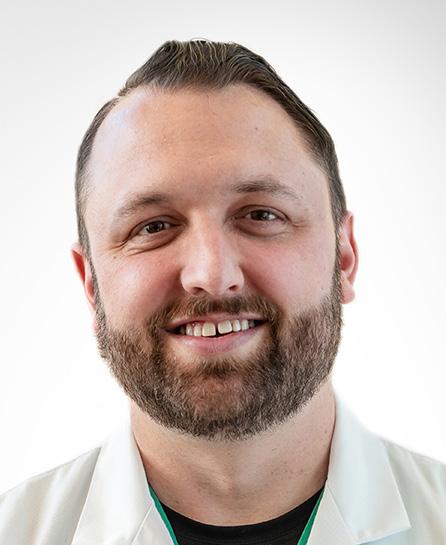
In 2018, I realized that most patients who had poor pain control while using the protocol were unintentionally noncompliant with the instructions. This was addressed with more purposeful
patient education prior to surgery and the creation of patient education handouts that were created and modified in response to patient feedback. Proper patient education includes explaining the benefits of opioid minimizing multimodal pain control, setting proper expectations so patients understand that surgery does cause pain, and that while they can expect to experience pain, it will be managed with the addition of an opioid is necessary. It is vitally important to have these conversations up front, because when patients are properly prepared and understand the reasoning, they are much more comfortable and willing to attempt opioid-minimizing analgesia. Now, with our updated education, we have found the need to prescribe oxycodone or refill their tramadol prescriptions to be less than 5 percent for most of our operations.
One underestimated opportunity is the use of multimodal pain control in the nonsurgical realm. There are people all over the country who had their first exposure to an opiate from accessing routine medical care. These people were in pain and needed intervention, but were opioids always necessary to provide adequate pain control? We have an opportunity for a paradigm shift in the way we think about postoperative pain management in the United States. Historically, in the United States, 90 percent of major or minor medical procedures were prescribed an opiate. After using opioids post-surgery to maintain adequate pain control during recovery, there are 3.3 billion opioid pills left over every year in the United States. With all this considered, there is an opportunity to shift our prescribing practices to opioids not as first-line treatment for acute pain, but as an adjunct when non-opioid alternatives are not sufficient to provide adequate pain relief. It is possible to drastically reduce that number while still providing compassionate pain control with opioids to those who need it.
The vitally important point is that medically indicated prescription opioid pain medications are not the enemy, and neither are the patients who rely on them. Prescription opioids are a vital tool in our battle to alleviate the suffering of pain. Opioids responsibly prescribed and utilized are both safe and necessary for many of our fellow Americans who suffer from chronic pain, palliative conditions and other causes of uncontrolled pain. The opportunity for discussion and change lies in the portion of our patients we have historically treated with an opioid as a first-line pain control method when non-opioids could provide high quality, compassionate pain control. Eliminating the use of opioids while leaving our patients in uncontrolled pain is not a compassionate, or ethical, solution. That practice runs afoul of many of the tenants that
FLORIDA MD - NOVEMBER/DECEMBER 2022 13
CONTINUED ON PAGE 14
22q11.2 Deletion Syndrome
By Brian C. Kellogg, MD, Chief of Plastic and Craniofacial Surgery, Nemours Children’s Health
transition to adult care should be carefully planned as these patients near adulthood.
Brian
serves as the chief of
Lip and Palate Program at
and
Children’s Health. He
after
Multimodal Pain Management with Opioid Minimization
By Luke Elms, MD CONTINUED FROM PAGE 13

we are called to uphold as medical providers. It should not be considered a victory if going “opioid-free” means leaving people in uncontrolled pain. Instead, when possible, we must replace the prescription opioids with a viable, effective alternative, and non-opioid multimodal pain control can fill that role. What multimodal pain control protocols have demonstrated is that significant opioid minimization while maintaining adequate pain control is possible in many cases. The broader application of opioid-minimizing multimodal pain control presents the opportunity for a much-needed discussion regarding how we approach acute pain control in a compassionate, safe manner, not just within our own practice, but throughout the entire healthcare system.
Luke Elms, MD, is a board-certified general surgeon with Orlando Health Medical Group at Orlando Health Dr. P. Phillips Hospital. He also has certification in robotic surgery and serves as teaching faculty for the general surgery residency program at Orlando Health. After earning his medical degree from the University of Oklahoma College of Medicine, Dr. Elms completed his general surgery residency at Orlando Health. Over his years in practice, Dr. Elms has developed both a professional and personal passion in the opioid epidemic. This passion has led to a focus on minimally invasive and robotic surgery techniques with postoperative opioid-minimizing multimodal pain control.
FLORIDA MD - NOVEMBER/DECEMBER 2022
14
12
CONTINUED FROM PAGE
C. Kellogg, MD,
plastic
craniofacial surgery as well as the director of the Cleft
Nemours
completed a fellowship in pediatric plastic and craniofacial surgery at Nationwide Children’s Hospital
an integrated residency in plastic surgery at University of South Florida. Dr. Kellogg earned his medical degree at University of Cincinnati College of Medicine.
Florida MD is a monthly medical/business digital magazine for physicians..

Florida MD is emailed directly to healthcare providers in Orange, Seminole, Flagler, Volusia, Osceola, Polk, Brevard, Lake and Indian River counties. Cover stories spotlight extraordinary physicians affiliated with local clinics and hospitals. Special feature stories focus on new hospital programs or facilities, and other professional and healthcare related business topics. Local physician specialists and other professionals, affiliated with local businesses and organizations, write all other columns or articles about their respective specialty or profession. This local informative and interesting format is the main reason physicians take the time to read Florida MD.
It is hard to be aware of everything happening in the rapidly changing medical profession and doctors want to know more about new medical developments and technology, procedures, techniques, case studies, research, etc. in the different specialties. Especially when the information comes from a local physician specialist who they can call and discuss the column with or refer a patient. They also want to read about wealth management, financial issues, healthcare law, insurance issues and real estate opportunities. Again, they prefer it when that information comes from a local professional they can call and do business with. All advertisers have the opportunity to have a column or article related to their specialty or profession.
FLORIDA MD - NOVEMBER/DECEMBER 2022
3
202
JANUARY – Digestive Disor ders Diabetes FEBRUARY – Car diology Hear t Disease & Stroke MARCH – Or thopaedics Men’s Health APRIL – Sur gery Scoliosis MAY – Women’s Health Advances in Cosmetic Sur gery JUNE – Aller gies Pulmonar y & Sleep Disorders JULY – Neurology / Neuroscience Advances in Rehabilitation AUGUST – Spor ts Medicine Robotic Sur gery SEPTEMBER – Pediatrics & Advances in NICUs Autism OCTOBER – Cancer Dermatology NOVEMBER – Urology Geriatric Medicine / Glaucoma DECEMBER – Pain Management Occupational Therapy Please call 407.417.7400 for additional materials or information. EDITORIAL CALENDAR
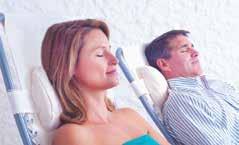
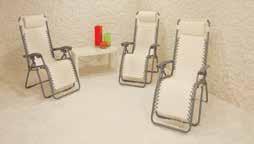
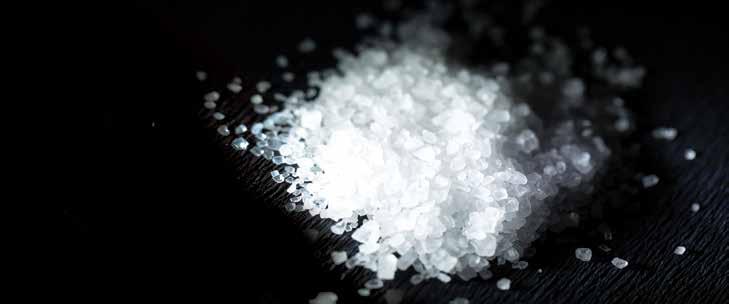





18 Relieve Symptoms of: • Acne • Allergies • Asthma • Cold & Flu • Cystic Fibrosis • Dermatitis • Ear Infections • Eczema • Sinusitis :: Kerri and Clay: “My son’s allergy medicines were causing terrible side effects. Now that we have been coming to The Salt Room we have been able to control his symptoms with salt therapy.” The Natural Way to Solve your Allergy, Sinus and Respiratory Discomfort. GIFT CERTIFICATES ARE AVAILABLE FUSION OF SCIENCE & NATURE 100% NATURAL TREATMENT DRUG FREE Joseph Cannizzaro, MD: “I have been recommending The Salt Room for years. It has helped my patients with respiratory nuisances and skin problems, reducing symptoms while we address the root cause to improve their long-term quality of life.” 407.862.1163 l 357 Wekiva Springs Rd., Longwood l www.SaltRoomLongwood.com Located inside Cannizzaro Integrative Pediatric Center. Offering relief to all ages. ANTI-BACTERIAL | SIDE EFFECT FREE | ANTI-INFLAMMATORY Jessica L.: “My son looked and felt better after just one session. His cough wasn’t as bad. I felt he could breathe so much better.”











 By Staff Writer
By Staff Writer

























